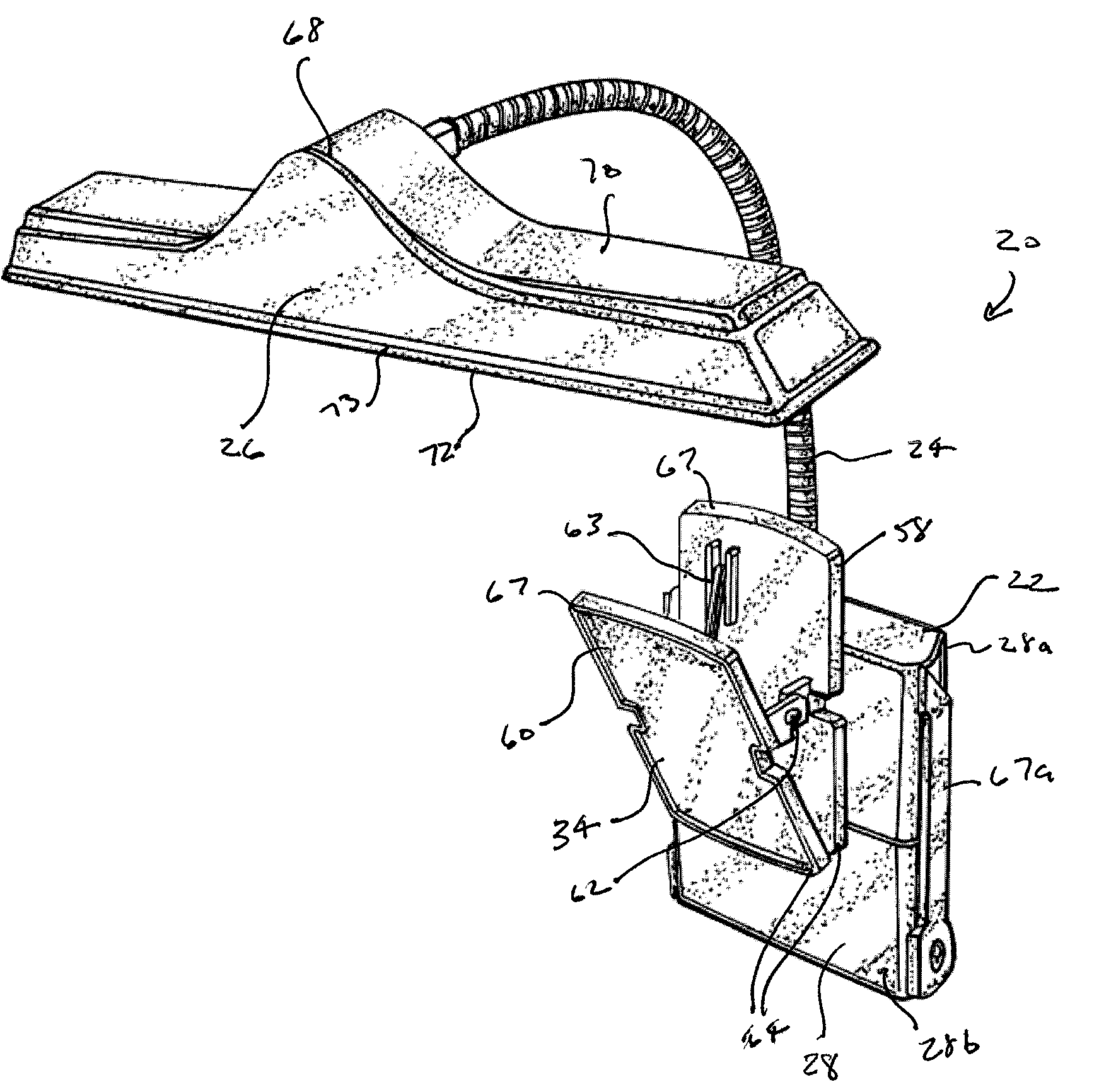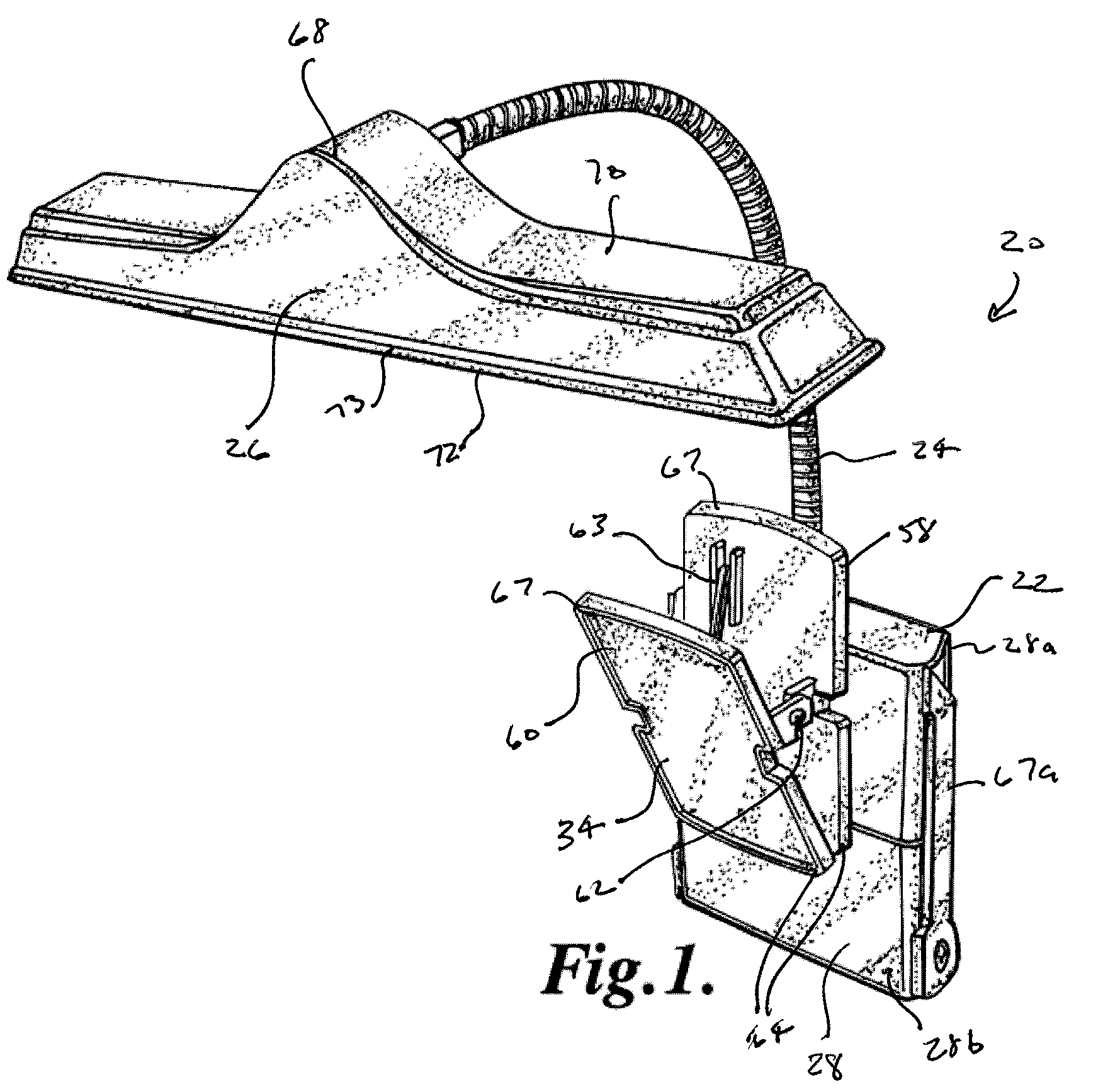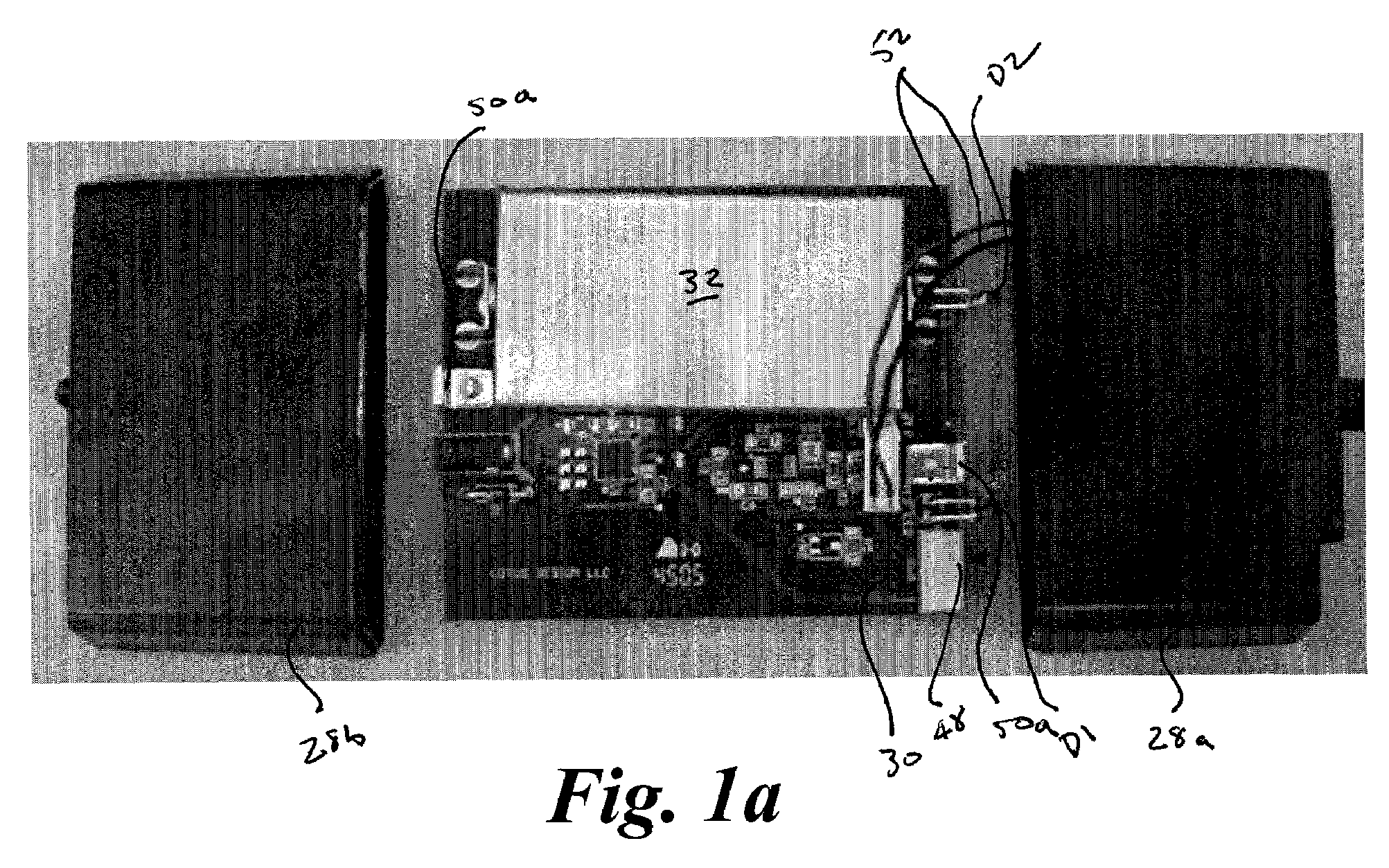Battery powered LED lamp
a battery-powered led lamp technology, applied in the field of electronic lighting devices, can solve the problems of low light level for the amount of power consumed, relatively low energy utilization efficiency, and inability to provide a lighting source for such venues, and achieve the effect of reducing overall efficiency, reducing light brightness, and maximum brightness
- Summary
- Abstract
- Description
- Claims
- Application Information
AI Technical Summary
Benefits of technology
Problems solved by technology
Method used
Image
Examples
Embodiment Construction
[0030]As depicted in FIGS. 1-10, an embodiment of the LED lamp 20 of the present invention generally includes power pack assembly 22, gooseneck 24, and shade assembly 26. Power pack assembly 22 generally includes housing 28, which may be formed in two halves 28a, 28b, and circuit board assembly 30, which may include battery 32, and attachment element 34. Housing 28 may be formed from lightweight polymer or other suitable material and is of sufficient size to house circuit board assembly 30 as well as other any electronics for lamp operation.
[0031]In an embodiment depicted schematically in FIG. 11, circuit board assembly 30 generally includes charging circuit 36 and regulator and light circuit 38. Charging circuit 36 functions to recharge rechargeable battery 32 from a power source, which may be a regulated DC adapter coupled with a 110V or 240V AC house system, connected through input jack 40. In an embodiment, charging circuit includes a Maxim / Dallas MAX1501ETE highly integrated, l...
PUM
 Login to View More
Login to View More Abstract
Description
Claims
Application Information
 Login to View More
Login to View More - R&D
- Intellectual Property
- Life Sciences
- Materials
- Tech Scout
- Unparalleled Data Quality
- Higher Quality Content
- 60% Fewer Hallucinations
Browse by: Latest US Patents, China's latest patents, Technical Efficacy Thesaurus, Application Domain, Technology Topic, Popular Technical Reports.
© 2025 PatSnap. All rights reserved.Legal|Privacy policy|Modern Slavery Act Transparency Statement|Sitemap|About US| Contact US: help@patsnap.com



